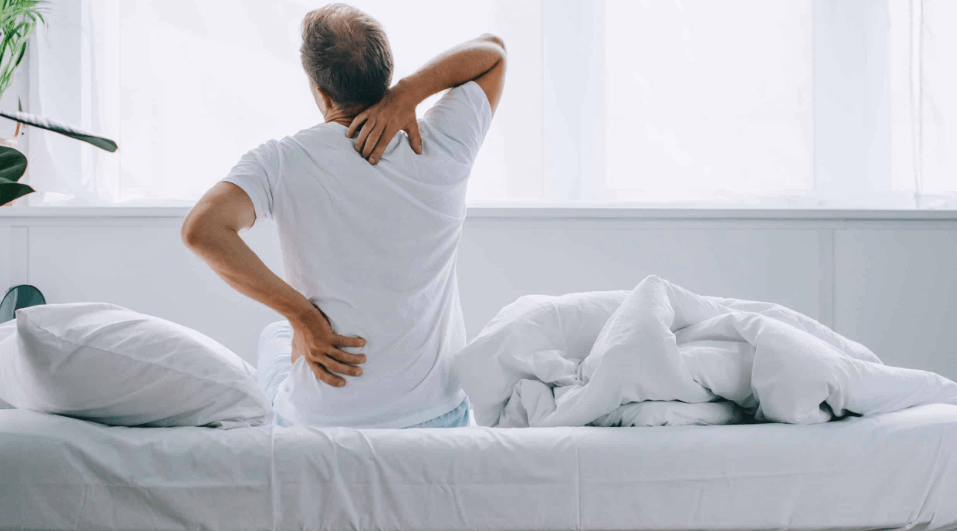Can the Right Mattress Help With Chronic Pain Conditions?

Chronic pain affects millions of individuals around the globe, showing up in forms as varied as arthritis, fibromyalgia, sciatic nerve issues, and persistent low back discomfort. No matter the source, effective management of that pain can noticeably enhance everyday function and overall quality of life. One vital yet frequently ignored piece of the puzzle is the mattress on which a person spends one-third of each day. A supportive, restful surface does more than cradle the body; it helps avoid pressure points, promotes spinal alignment, and, ultimately, fosters the restorative sleep that underpins long-term health.
In what follows, we will examine exactly how a mattress interacts with musculoskeletal health, outline practical criteria for choosing a pain-friendly model, and present the queen size luxury mattress option as a potential game changer for many. A mattress may seem like little more than a piece of furniture, yet with careful selection it can shift from passive background item to active partner in the battle against chronic discomfort.
Understanding Chronic Pain and Sleep Disruptions
Chronic pain persists for longer than three months and is linked to many underlying health issues. For those living with it, finding a comfortable sleeping position can be nearly impossible, so sleep slips away. The situation becomes a cruel loop: sharper discomfort robs them of rest, and lost sleep amplifies the ache.
Afflictions such as arthritis, back problems, and fibromyalgia create nagging sensations in joints, muscles, and bones, so tailored support while lying down matters. Without the deep, restorative slumber that repairs tissues, pain intensifies, leaving sufferers drained, less mobile, and vulnerable to low spirits.
The Link Between Mattress Quality and Chronic Pain
An unsatisfactory mattress can aggravate chronic pain by denying the spine and joints the balance of softness and firmness they need. If bedding is either too yielding or overly rigid, it places extra strain on sensitive areas and promotes restlessness. Gradually, that environment breeds morning stiffness, dull muscular soreness, and nights that feel endlessly interrupted.
The right mattress can ease pain and encourage deeper sleep in several important ways:
Proper Spine Alignment: To tame back pain, the spine must retain its natural curve while resting. A well-balanced mattress supports this curve and eases strain on the lower back, often bringing noticeable relief.
Pressure Relief: Some models use special materials to cushion high-pressure spots like shoulders and hips. This feature matters most to those with arthritis, fibromyalgia, or similar disorders where tender joints protest against hard surfaces.
Enhanced Comfort: Comfort is deeply personal, yet a mattress that feels pleasant lets the body unwind fully. When relaxation comes easily, muscles and joints can repair overnight instead of remaining tense and sore.
Reduced Motion Transfer: For couples, a bed that absorbs motion means one person can shift without waking the other. By cutting ripples, such a mattress protects half the partnership from sudden disturbances and fosters sounder sleep for both.
Types of Mattresses for Chronic Pain Relief
Chronic pain sufferers often find that their choice of mattress can make or break a good night’s sleep. Fortunately, today’s market offers several mattress categories, each aimed at easing discomfort in its own way.
Memory Foam Mattresses
Memory foam is prized for its slow-response surface that gently molds to the sleeper’s contours. This adaptive quality minimizes harmful pressure on joints and the spine, a crucial feature for anyone coping with arthritis, fibromyalgia, or sciatica. Many users report waking with less stiffness after switching to a quality memory foam model.
Latex Mattresses
Crafted from either natural or synthetic rubber, latex beds strike a sturdy yet forgiving balance. They resist sagging over time and retain a subtle buoyancy that some find comforting. Additionally, most latex mattresses are hypoallergenic, drawing fewer dust mites and mold spores, which matters to sensitive respiratory systems.
Hybrid Mattresses
As the name suggests, hybrids blend a traditional coil core with layers of foam—often memory or latex—for layered benefits. The springs lend robust support while the foam stands ready to cushion shoulders and hips, meeting diverse sleep positions. For couples or restless sleepers who crave both give and lift, a hybrid design often works best.
Innerspring Mattresses
Innerspring mattresses remain the most familiar style in the industry, relying on a network of coils to deliver basic support. Although they usually do not cradle the body as deeply as memory foam or latex alternatives, models built with pocketed coils can still ease chronic pain by isolating motion and distributing weight fairly.
Adjustable Mattresses
Adjustable beds let users tilt the sleep surface up or down at the head or foot. This simple mechanics is especially useful for those with ongoing discomfort because it enables repositioning that eases strain on targeted joints or muscles throughout the night.
Why a Queen Size Luxury Mattress Might Be the Ideal Choice
When selecting a mattress aimed at taming chronic pain, the dimensions of the surface should not be overlooked. A queen size luxury mattress balances generous space with high-quality materials, offering distinct advantages that help minimize nightly discomfort.
Space for Movement
Chronic pain can shift suddenly, forcing the sleeper to adapt quickly. A queen size luxury mattress provides ample area to stretch, roll, or elevate a limb without tossing a partner. That freedom eases pressure on sensitive joints and lets the body settle into its natural alignment more readily, improving overall rest.
Luxury Features for Pain Relief
A high-end mattress often showcases cutting-edge materials and engineering aimed at elevating comfort and spinal support. Components such as adaptive memory foam, targeted pressure zones, and temperature-regulating layers work together to reduce discomfort and encourage deeper, more restorative sleep. In a queen size luxury mattress, these premium upgrades typically translate into noticeable relief for people grappling with persisting aches and pains.
Support for a Partner
When couples share a bed, the spacious footprint of a queen size luxury mattress offers each person the elbow room to stretch without rolling into the other. Add a luxury model equipped with motion-isolating coils or foam, and the ripples caused by one sleepers movements fade before reaching the other. This combination of size and technology promotes a more undisturbed night for both partners, even when one of them is managing chronic discomfort.
Durability and Longevity
Premium mattresses are built with sturdier materials and reinforced craftsmanship, extending their useful life far beyond ordinary models. For those living with chronic pain, a resilient sleeping surface that retains its shape year after year means consistent lumbar support and pain management every evening. That long-lasting reliability turns a luxury purchase into an ongoing investment in health, giving users peace of mind far down the line.
Other Factors to Consider When Choosing a Mattress for Chronic Pain
While mattress type and size play central roles in alleviating discomfort, these additional elements can further fine-tune your restful experience:
- Firmness Level
Firmness is subjective yet pivotal; the wrong feel can misalign the spine, worsening pain. Medium-firm models typically suit many sufferers because they cradle pressure points while keeping the hips and shoulders aligned. Still, trying several firmness levels is wise; your unique aches may call for softer, firmer, or even adjustable options.
- Temperature Regulation
Fluctuating temperatures can tighten muscles and amplify pain, a reality for conditions like fibromyalgia. Materials engineered for cooling—for instance, gel-infused foam, phase-change covers, or open-cell latex—draw heat away, helping you stay free of night sweats and restless turning. Look for independent testing, such as certified breathable fabrics, to verify any claims.
- Quality of Materials
Subpar components sag and lose support early, forcing you to re-invest sooner than planned. Luxury-grade organic latex, dense memory foam, or tempered pocket coils resist indentation and retain consistent push-back, so aches have less chance to build over time. Always check warranties covering material breakdown; ten years or longer usually indicates serious craftsmanship.
Conclusion: Investing in the Right Mattress for Chronic Pain Relief
Living with chronic pain shapes daily routines, so solutions that ease discomfort deserve careful consideration. Among them, a well-chosen mattress often goes unnoticed yet can be transformative. One that combines steady support, gentle pressure relief, and inviting softness specifically targets the painful points of the body, translating into deeper, less interrupted sleep.
A premium-queen mattress strikes a useful balance, offering generous room and consistent durability while still cradling sensitive areas. Making this single upgrade can lift nightly rest and, by extension, daytime energy and mood. Put simply, when you invest in better sleep, you are, bit by bit, building a healthier, less painful tomorrow.
FAQs
- Can a mattress really help with chronic pain?
Yes, a well-designed mattress supports the body, cushions sensitive areas, and encourages proper spinal alignment, all of which may lessen the discomfort associated with long-term pain.
- What type of mattress is best for back pain?
Memory foam, latex, and hybrid models are frequently recommended because they combine contouring softness with firm support for the spine and lower back.
- Should I choose a firm or soft mattress for chronic pain?
A mattress rated medium-firm tends to strike the best compromise, giving enough support without making pressure points worse; still, personal comfort and the exact cause of pain matter.
- Is a queen-size mattress large enough for two people?
For most adult couples, a queen mattress provides enough surface area to sleep undisturbed and to absorb motion when one partner shifts.
- Can a luxury mattress really make a difference for pain relief?
Higher-end models typically use upgraded foams, cooling layers, and zoned support to cradle the body more evenly, features that many users say translate directly into less morning stiffness.
- How often should I replace my mattress for chronic pain relief?
Most experts recommend changing a mattress every seven to ten years, though actual lifespan varies with use and quality. Signs of sagging, lost firmness, or visible damage suggest that the bed no longer supports your body, and a new purchase should be considered.

